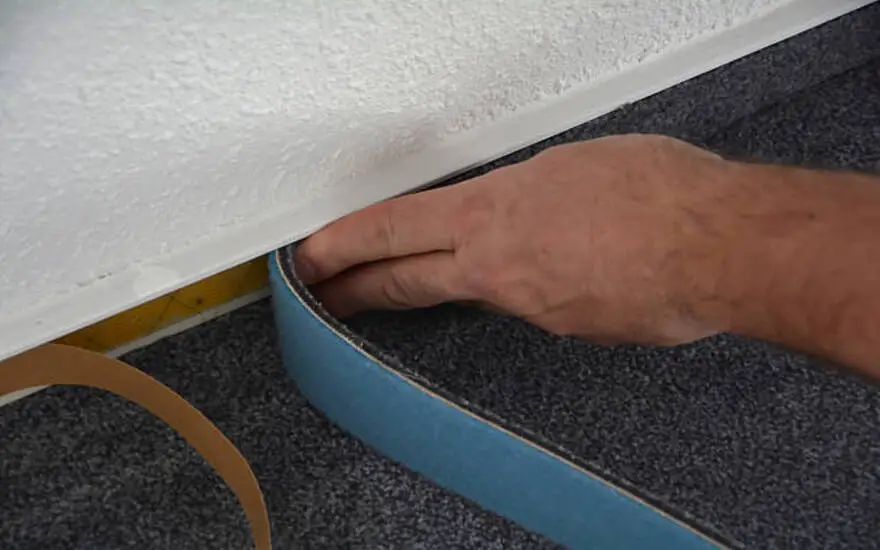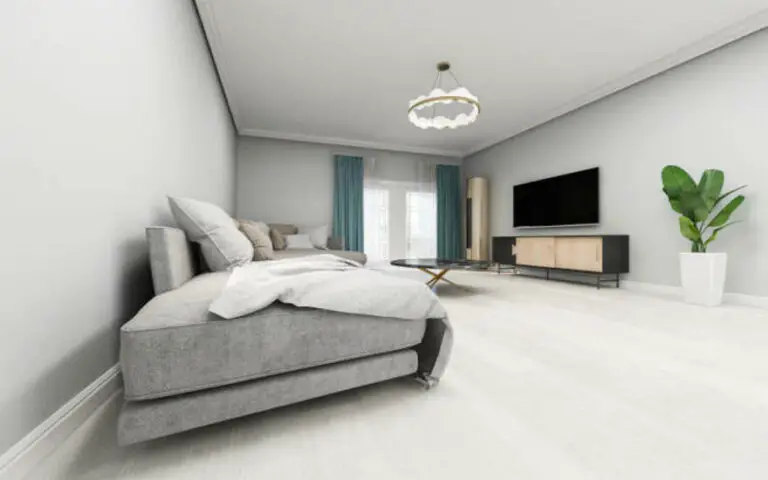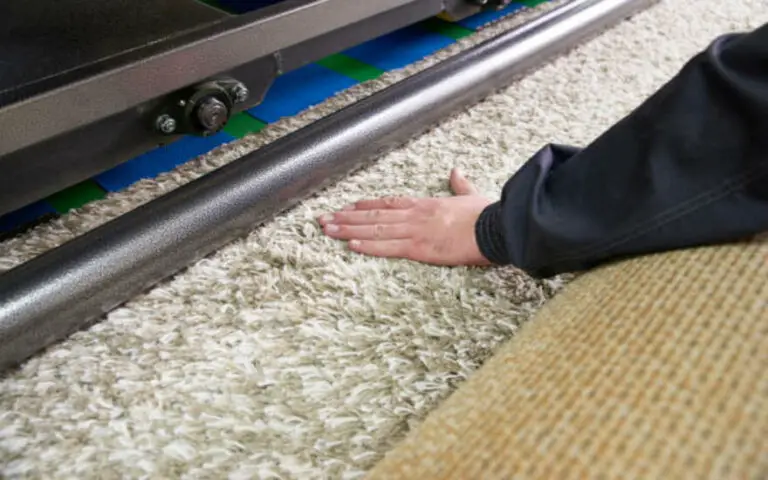Installing carpet is a great way to upgrade the look of a room, but do you need to remove the baseboards first? In this blog post, I’ll answer that question and provide some tips for installing carpets without damaging your walls.

What Is A Baseboard?
A baseboard is a trim that covers the joint between the bottom of the walls and the floor. It’s usually installed after the wall and flooring have been completed, and it serves as an attractive frame for the room.
Although removing baseboards before installing wall-removingsary, there are some benefits. Removing unnecessary baseboards can help save time and money, reduce the risk of damage to walls, carpets, and baseboards, and even improve the aesthetic appeal of the finished product.
10 Benefits of Removing Baseboards Before Installing Carpet
Removing baseboards before installing carpets is beneficial in many ways. Removing the baseboards eliminates the risk of damaging the walls, carpets, and baseboards, preventing mold and mildew growth underneath the rug, allowing for a better fit, and doing cleaning and vacuuming easier.
1. Time-saving benefits
Removing the baseboards before installing the carpet is a great way to save time. Not only does it mean you don’t have to go through the laborious process of removing and putting them back on again, but it also means that the installation process can be completed much more quickly.
This is because the installer doesn’t need to take the time to work around the baseboards or worry about damaging them during the installation process. By removing the baseboards ahead of time, you can ensure that your carpet will be installed quickly and correctly.
2. Reduced risk of damage to walls, carpets, and baseboards
Removing baseboards before laying the carpet can reduce the risk of damage to walls, rugs, and baseboards. This is because, when the installer is laying down the carpet, they don’t have to worry about causing any damage to existing baseboards.
Without the need to work around existing baseboards, the installer can lay down the carpet more quickly and accurately.
Additionally, paint or caulk spills onto the carpet or during installation, and removing baseboards is less likely sure no gap between the wall and the carpet, which can lead to mold or mildew growth underneath.
Removing baseboards before installing a new carpet is an easy way to ensure that your walls, rugs, and baseboards remain pristine.
3. Prevent mold and mildew growth from underneath the carpet
Removing baseboards before installing carpet is essential in preventing mold and mildew growth. Removing the baseboards creates an air gap between the rug and the walls, allowing moisture to escape.
This prevents mold and mildew from forming in the gap, which can cause damage to your carpets and walls. In addition to creating an air gap, removing baseboards also makes it easier to clean and vacuum underneath your rugs. This will help reduce the chances of mold and mildew growth by ensuring that dirt and debris are not trapped in the gap.
4. Better fit of the carpet due to the absence of baseboards
Removing the baseboards before installing the carpet can benefit the rug’s overall fit. Removing the baseboards eliminates any potential obstruction preventing the mat from sitting flush against the wall.
This will create a better fit and a more aesthetically pleasing result. Additionally, by removing the baseboards, you can ensure a snug fit between the edges of the carpet and the walls, improving your newly installed carpet’s overall look and feel.
5. Easier to clean and vacuum
One of the great benefits of removing baseboards before installing carpet is that cleaning and vacuuming are much more accessible. When baseboards are left in place, it can be challenging to get the vacuum nozzle into the corners and crevices around the edge of the carpet.
This can lead to dirt and debris remaining in those areas, eventually developing mold or mildew. Removing the baseboards ensures that your carpeted area is consistently clean and free from dirt and dust.
6. Added flexibility when selecting a new carpet
When selecting a new carpet, removing the baseboards can provide added flexibility. Without the presence of baseboards, there are more options when it comes to the type, color, and pattern of carpet you can choose.
Additionally, you have more space to work without the baseboards when installing your new carpet. This means that you can select a style of carpet that is wider than what your walls would typically allow for with the presence of baseboards.
Removing the baseboards also allows for a smoother transition between rooms with different types of flooring and eliminates the need for an additional transition strip.
7. Improved installation process
Removing the baseboards before installing the carpet allows for an improved installation process. Not only does removing baseboards save time, but it also reduces the risk of damage to walls, rugs, and baseboards.
With the baseboards out of the way, it is easier to install the carpet since no obstructions are blocking the way. Furthermore, ensuring the rug fits appropriately and securely is easier with no baseboards in place.
This also minimizes disruption in your home as there is no need to adjust constantly and re-adjust the carpet when baseboards are present. Removing baseboards can result in a smoother and more professional installation process.
8. Minimized disruption in the home
Removing the baseboards before installing carpeting can help minimize disruption in the home. You won’t have to worry about working around the baseboards or moving furniture to accommodate them.
Removing them from the start lets you install the carpet quickly and easily, with minimal disruption to your daily life. Furthermore, by removing the baseboards beforehand, you can avoid potential damage to them during installation.
This means you won’t have to worry about repairs or replacements afterward, saving time and money in the long run.
9. Cost savings on labor and materials
Removing the baseboards before installing the carpet can also help you save money on labor and materials. Doing so means you won’t have to pay extra for the carpet installer to remove the baseboards, which can add $0.25-$1 per square foot.
Furthermore, you won’t need to purchase additional materials such as adhesive or trim to cover up the gaps or imperfections left by leaving the baseboards in place.
So, while it may require some extra effort and time, removing the baseboards can help you save money in the long run.
1. 0Aesthetically pleasing results.
Removing the baseboards before installing the carpet can significantly impact your home’s aesthetic. With the baseboards removed, you can ensure the rug fits perfectly in your space, creating a seamless transition between walls and floors.
It also eliminates gaps between the wall and the carpet, creating a more polished look. Plus, without the baseboards to obstruct your view, you’ll enjoy the full beauty of your new carpet.
Steps For Removing Baseboards
Removing baseboards is a reasonably straightforward process. First, you’ll need to decide which baseboard you have, as they can be nailed, glued, or screwed in place. You’ll then need to use a pry bar and hammer to remove the baseboard carefully.
Make sure to go slow and use caution to avoid damaging the walls or baseboard. Next, use a putty knife to scrape off any residue from the wall that’s left from the adhesive used to secure the board. Finally, remove any nails or screws that remain and set the pieces aside for later re-installation.
What To Do If You Don’t Remove The Baseboards
If you choose not to remove your baseboards when installing a new carpet, you can still do some things to ensure a good fit. When measuring and cutting the rug, ensure that the edges are flush with the baseboard so that it does not cause any gaps or buckling.
It is also essential to use high-quality carpet padding and adhesive to help secure the carpet and prevent any shifting over time. Additionally, use a power stretcher when installing the carpet, as this will help create an even surface and reduce the risk of buckling or wrinkles.
Finally, regularly vacuum the area to prevent dust or debris from accumulating underneath the carpet.
Summary
In conclusion, whether or not you remove the baseboards before installing a new carpet largely depends on your individual needs and preferences. Removing the baseboards can provide several benefits, such as time-saving, reduced risk of damage, mold prevention, easier cleaning and installation, better fit of the carpet, and cost savings on labor and materials.
On the other hand, if you decide not to remove the baseboards, ensure that your installer leaves a half-inch gap between the trim and the carpet to prevent any damage. Ultimately, weighing your options before deciding will ensure you get the best results for your home.






